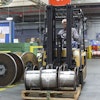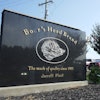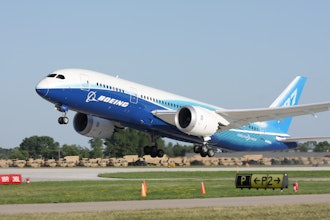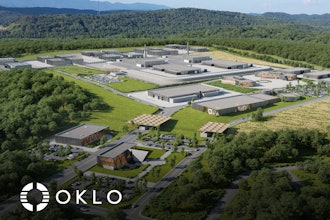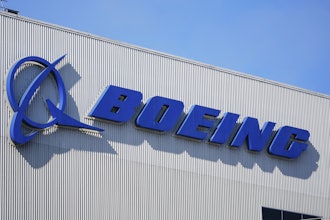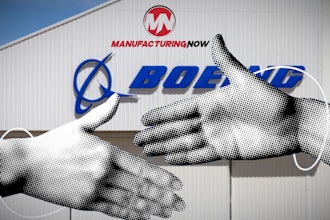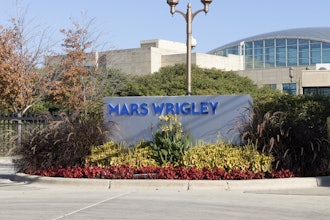So, in essence, butadiene should not be touched or inhaled by anyone — the near equivalent of zero tolerance. That’s easier said than done when transporting this chemical in pressurized railcars that have been in service for several years and are equipped with connection devices that are outdated and difficult to use.
One of the largest manufacturers of butadiene, and other C4 chemical products, is Houston-based Texas Petrochemicals LP (TPC). The company has manufacturing facilities in the industrial corridor adjacent to the Houston Ship Channel, Baytown and Port Neches, TX, and Lake Charles, LA, respectively. TPC ships its butadiene via railcar and has been doing so successfully for quite some time. In fact, the company recently was honored with the 2006 Union Pacific Railroad Chemical Transportation Safety Pinnacle Award. TPC is one of only 30 winners with the distinction of having zero non-accident releases and implementing safe loading practices, out of 1,200 Union Pacific hazardous material shippers. TPC has won this award six times, indicating that safety is not just a catchphrase for this company. It’s a way of life.
Commitment to Safety

Butadiene should not be touched or inhaled by anyone — the near equivalent of zero tolerance.
“TPC has always been concerned about the environment, people around us, and our workers, so we have always tried to develop ways to prevent emissions,” said Gary Henneke, TPC’s manager of transportation. “The leftover particulate from the connections had us very concerned.”
The equipment that was in use at the time was meeting regulations set forth by the EPA, OSHA, and Texas Commission on Environmental Quality. However, the fact remained that TPC was not content to let its existing equipment perform under their expectations. In June 2005, Henneke began searching for the ideal dry disconnect coupler system for possible installation on all of TPC’s butadiene railcars. The company leases its railcars from major suppliers, such as Union Tank Car, ARL, and Trinity Industries, and has more than 3,000 in its fleet with roughly 600 units devoted to transporting butadiene. The capital outlay for an upgrade such as the one that Henneke and TPC were about to embark on was substantial. Therefore, without the ideal system, Henneke would not be as eager to spend the time and money involved on this upgrade.

Texas Petrochemicals LP workers do not have to use cheater bars, pipe wrenches, or hammers to connect the valves. They just turn a lever to connect.
“In October 2005, I went to OPW Engineered Systems’ headquarters in Lebanon and met with their engineers and Greg Carrino (director of sales and marketing) to see exactly how this product worked,” recalled Henneke. “I liked what I saw, and it was during that meeting that we also began our preliminary work to receive the proper approvals from the American Association of Railroads (AAR). Since the Drylok product was already approved by the AAR, it made it easier for us to seek out approvals for our specific application.”
Upon securing approvals from the AAR and TPC’s board of directors, and passing a capping test that was performed by Culture Industries, Henneke began the conversion process. He worked with Matt Tierney, Southwest regional manager, and David Garlington, vice president, of TransQuip USA Inc., a railcar equipment distributor and service provider, assisting in the actual equipment upgrades.
Benefits of Upgrading

One of the largest manufacturers of butadiene is Houston-based Texas Petrochemicals LP.
“Three valves on each railcar have to be done that way,” explained Henneke. “He is hammering with those hammers, he is using those pipe wrenches, busting those knuckles, and hurting those backs. Now with the new system, all the worker has to do is open the lid, pull the loading arm over the manway, set the Drylok female fitting over the male connection, and open the valve. That’s basically it. Hooking up a car goes from a half-an-hour to just seconds now. It’s like moving from the 19th century to the 21st century with this addition.”
By incorporating the Drylok couplers into its railcars, TPC has realized four major benefits:
1. Reduced Emissions
As the driest disconnect in the industry, the Drylok eliminates threaded connections that allow fugitive emissions. It also meets emission requirements set by EPA, OSHA, and TCEQ.
2. Time Savings
The average time for a TPC worker to connect the loading arm to the railcar valves was reduced from 35-40 minutes down to 35-40 seconds.
3. Ergonomic Benefits
No longer do TPC workers have to use cheater bars, pipe wrenches, or hammers to connect the valves. Now they just turn a lever to connect — no heavy lifting or bending over for long periods of time.
4. Increased Railcar Safety
In today’s world of possible terrorist threats, TPC was pleased to find that the Drylok product is tamper-resistant. This eliminates the possibility of sabotage, theft, and contamination. Only the manufactured mating piece allows access to the system.
Buy-in From Everyone

Getting butadiene, a colorless flammable gas and liquid, from Point A to Point B can be a difficult challenge.
“I don’t care how good a product design is, if you put it up on that rack and say, ‘See ya,’ it’s not going to work. You have to put it on that rack, you have to build a relationship with that worker, that team leader, and show him exactly how it works. Then you have to give him your business card and say, ‘If you have a problem, you call me.’ You have to check up on him until he is very comfortable,” explained Henneke. “OPW Engineered Systems was focused on making sure every equipment upgrade is a smooth transition. That’s why this has been a success story. My hat goes off to everyone involved.”
In addition to its own employees, Henneke and the entire team of OPW Engineered Systems and TransQuip personally met with all of the company’s customers and suppliers to ensure that the upgrade was explained thoroughly and the proper training was in place for everyone involved.
“We’re still converting railcars and racks today. We’re working with Huntsman (Odessa), Nova Chemical, Chevron, Phillips, and several other customers right now,” said Henneke. “In fact, we have some of our comrades in the business that are calling us and asking us about this product.”
| 5 Easy Steps 1. Push the coupler onto the adaptor by first engaging the lower jaw of the coupler under the lip of the adaptor and then tilting the coupler upward to engage the top jaw. 2. Turn the handle counter-clockwise until the lock engages. The coupler and adaptor are locked together, but the valve is closed. 3. Press the button on the coupler down and turn the handle counter-clockwise until it locks. The valve is now open and the product will flow. 4. To disconnect, press the button on the coupler and rotate the handle clockwise until it locks. The valve is now closed. 5. Press the button on the coupler down and turn the handle clockwise to the "in-line" position. Press the tab on the opposite side of the coupler to release the upper jaw and move the coupler away. |
He continues to point out that through the efforts of many, especially OPW Engineered Systems, TPC now has the safest railcars in North America. “I would highly recommend the Drylok system to any carriers of butadiene and other hazardous liquids. Its value has been proven to me. I would attribute the successful integration of the Drylok system as a key component to the success of TPC receiving the 2006 Union Pacific Railroad Chemical Transportation Safety Pinnacle Award. Only the companies that are focused on safety and continually improve their operations are honored with the UP’s Pinnacle Award,” said Henneke.
Technical information for this article was provided by OPW Engineered Systems. More information on the Drylok system is available from the company by sending an e-mail to [email protected] or calling 513-696-1500.
